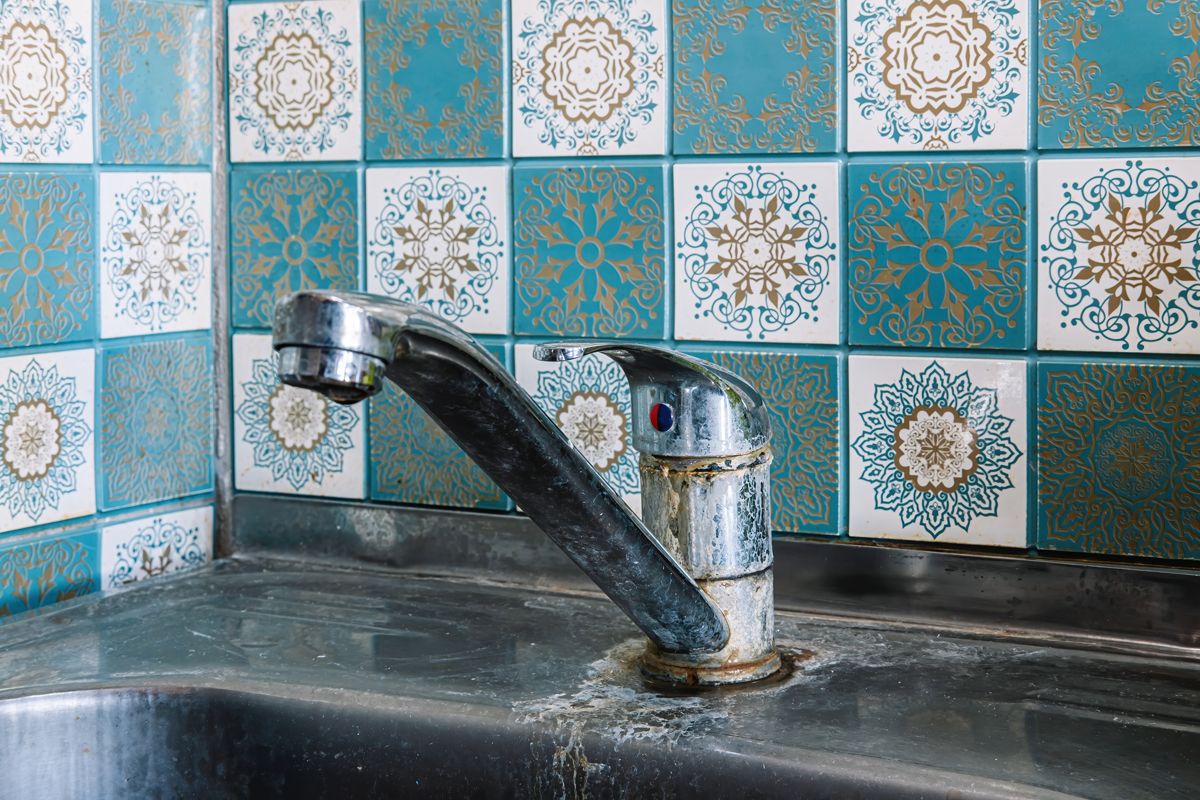Mineral deposits are the result of “hard water” that has a high amount of dissolved minerals. If you want to get rid of any hard water buildup on your faucet, follow our five-step DIY guide below!
What Is Hard Water?
Hard water will be produced when water filters through deposits of chalk, gypsum, or limestone. This water can be high in calcium and magnesium, which can be problematic depending on the setting the water is used in.
The issues arise when the water causes boilers to malfunction in industrial settings or creates a soap formation. This can clog up shower or laundry valves inside your home.
How To Remove Hard Water Stains From Your Faucet
Let’s take a look at what you can do to remove these stains from your faucet. Follow our simple, five-step guide below.
Step 1. Gather Necessary Materials
When it comes to battling mineral deposits, acidic liquids are your best bet. Acid will eat away calcium and other mineral buildups on faucets. You’ll be able to get rid of mineral deposits with these household cleaners:
- White vinegar.
- Lemon juice.
- Sulfuric acid.
- CLR cleaner.
- Muriatic acid (mix 1-part acid with 5-parts water).
- Phosphoric acid cleaners.
Always put safety first when attempting to remove these hard water stains. It’s recommended that all homeowners have the following materials on hand:
- Protective eyewear.
- Gloves (PVC or neoprene gloves).
- Pliers.
- Towel or rag.
- Rubberbands.
- Sponge or toothbrush.
- Plastic bag.
Step 2. Remove Faucet Aerator
While most DIY-ers will suggest putting a plastic bag over the faucet to remove deposits, this typically only removes buildup on the outside. If you wish to clean both the inside and outside of the faucet to prevent future clogs, try removing the faucet aerator.
The aerator is located on the tip of the faucet head. Stand over the faucet, gripping the aerator with a pair of pliers. Twist it counterclockwise until the aerator comes completely off. Keep track of gaskets and other parts that you must reattach following the cleaning.
Step 3. Soak Parts In Acid
After removing the aerator, put your protective eyewear on and pour your cleaner of choice into a bowl. Place your removed fixtures into the bowl carefully. To clean the rest of the faucet, fill your plastic bag with the cleaner and secure this around the faucet using a rubberband.
If the base of the faucet has buildup, soak an old rag or towel in vinegar. Wrap this around the area. Leave this on for at least an hour, then scrub off any remaining buildup.
Step 4. Rinse And Scrub In Running Water
When the aerator is finished soaking, scrub the surface using a soft cloth, toothbrush, or sponge. This is important because acids can undoubtedly eat away at metals if they are left on for long periods of time.
Step 5. Reconnect All Parts
Once your aerator is clean, reconnect all components in the proper order to their fixtures.
Salt Works USA In Arizona
At Salt Works we strive to meet the salt delivery needs for the entire Phoenix valley. Proudly serving the great state of Arizona for over 20 years, Salt Works has become a leading provider for salt and water treatment needs by earning the trust of our valued customers. We promise to build on our strong foundation and reputation through exceptional customer service and quality of our products. Contact us today!






